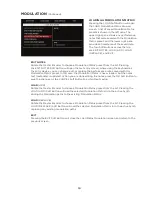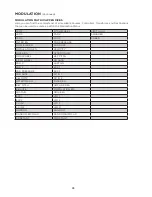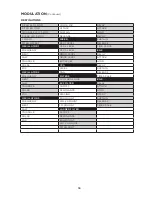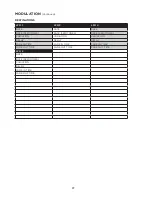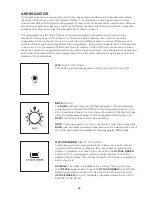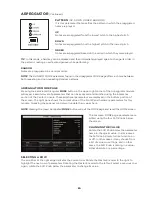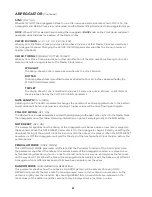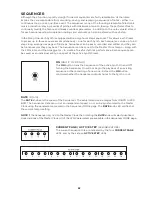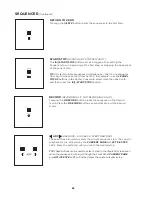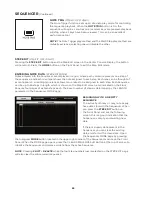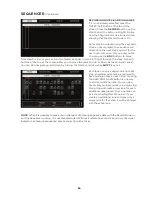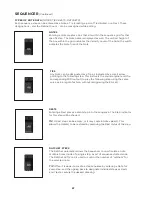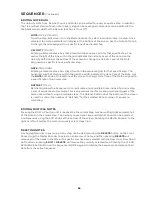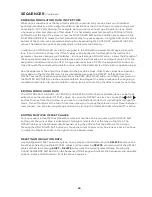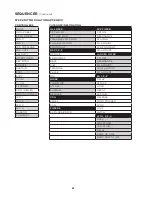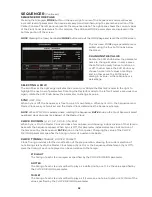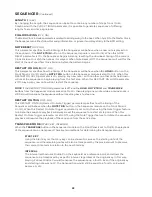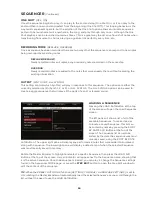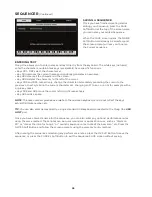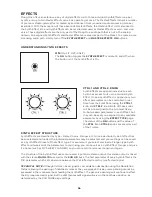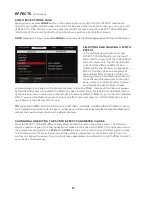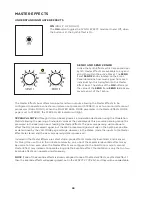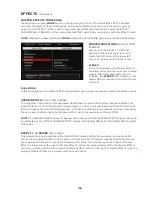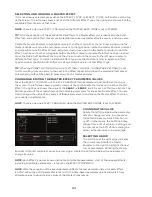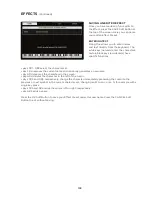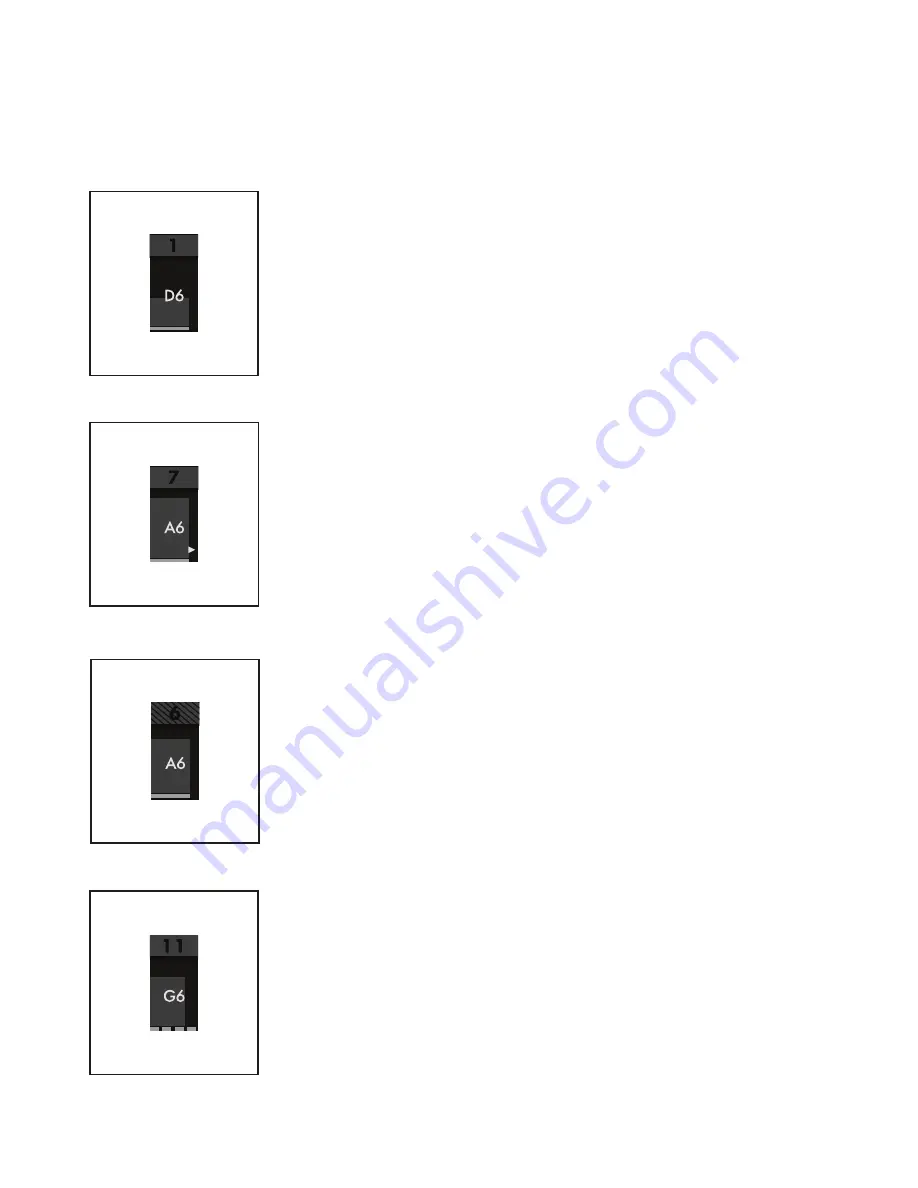
87
SEQUENCER
(Continued)
TYPES OF NOTE DATA
(NOTES, TIES, RESTS, RATCHETS)
Each sequence step can be entered as a Note, a Tie (creating a pair of Tied Notes), or a Rest. These
designations – and the Ratchet Count – can be reassigned while editing.
NOTES
Entering a Note creates a box that sits within the sequence grid for that
specific step. The Note name is displayed as well. The vertical height of
the box within the grid indicates the Velocity Level of the Note; the width
indicates the Gate Time of the Note.
TIES
Any Note can be designated as a Tie, as indicated by a small arrow
pointing to the following step. This instructs the sound engine (and the
corresponding MIDI output) to play the following step using the same
voice as in a legato fashion, without retriggering the EGs, etc.
RESTS
Entering a Rest places a silent step into the sequence. The Step Indicator
for this step will be shaded.
TIP
: A Rest step can be empty, or it may contain Note value(s). This
allows the Note(s) to be restored by removing the Rest status of the step.
RATCHET STEPS
The Ratchet parameter allows the Sequencer to re-articulate a note
multiple times inside of a single step; a sort of sequence stutter mode.
The Ratchet Soft Knob is used to control the number of “ratchets” for
the selected note.
TIP
: Often it is easier to create a step sequence by entering a Note for
every step, and then going back to designate individual steps as Rests
and Ties to capture the desired phrasing.
Summary of Contents for One
Page 2: ......
Page 6: ...This page left intentionally blank ...
Page 103: ...103 This page left intentionally blank ...
Page 113: ...113 This page left intentionally blank ...
Page 127: ...127 This page left intentionally blank ...
Page 146: ...146 ...


